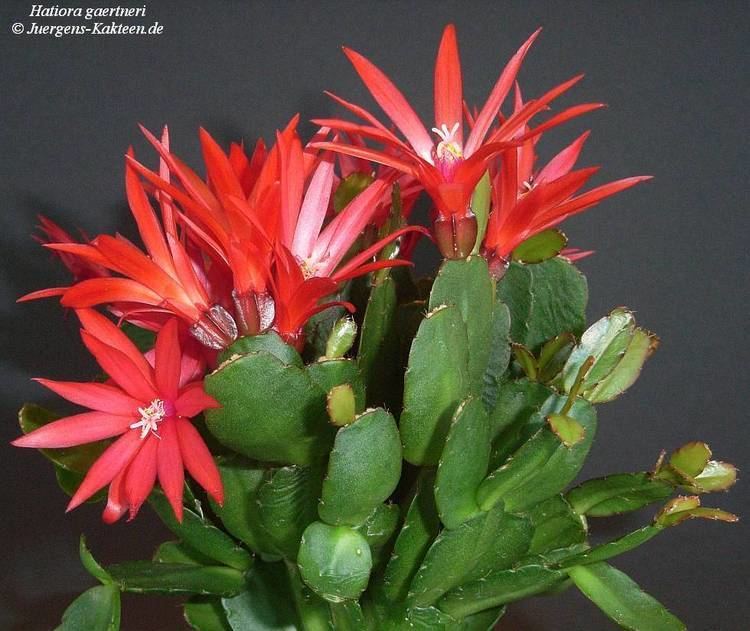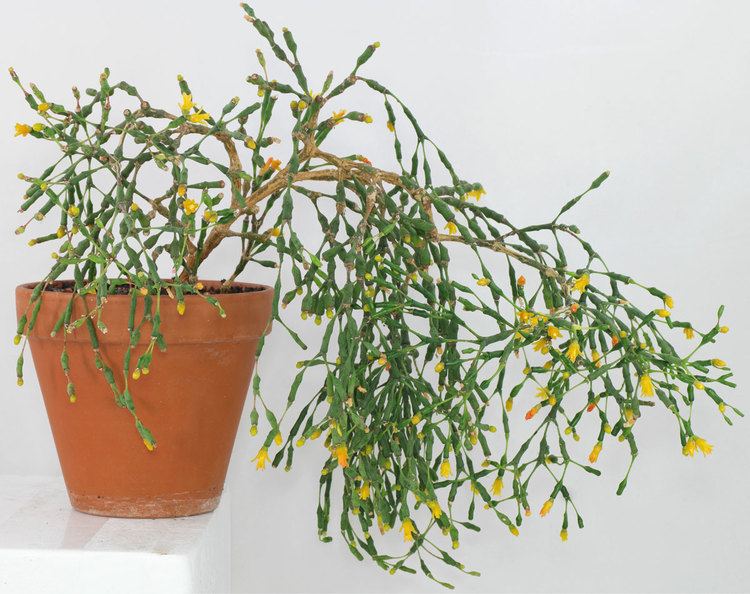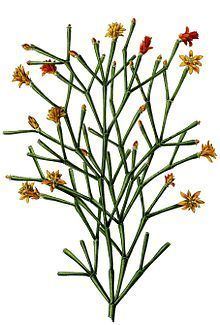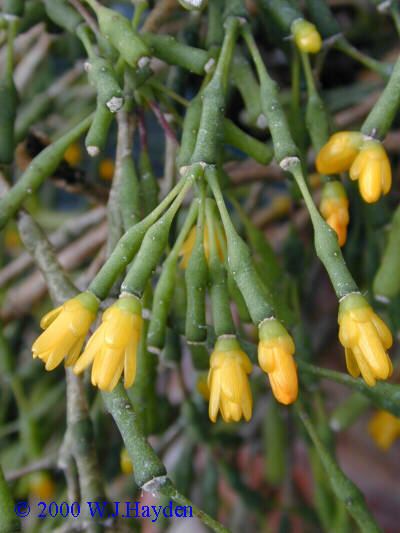Family Cactaceae | Scientific name Hatiora Rank Genus | |
 | ||
Lower classifications Hatiora salicornioides, Hatiora gaertneri | ||
Propagating cactus how to harvest easter cactus seed rhipsalidopsis hatiora
Hatiora is a small genus of epiphytic cacti which belongs to the tribe Rhipsalideae within the subfamily Cactoideae of the Cactaceae. Some Hatiora species are well known and widely cultivated ornamentals, known as Easter cactus or Whitsun cactus.
Contents
- Propagating cactus how to harvest easter cactus seed rhipsalidopsis hatiora
- My easter cactus hatiora gaertneri in white bloom
- Description
- Name and synonyms
- Subgeneric classification and species
- References

My easter cactus hatiora gaertneri in white bloom
Description

All Hatiora species are found as epiphytes growing on trees or (rarely) lithophytes growing on rocks. They occur only in the tropical rainforests of the Mata Atlântica in south-eastern Brazil. The plants are weakly succulent, growing upright or pendent; spines are usually missing. The flowers are borne terminally; they are actinomorphic (radially symmetrical) and are always coloured. The fruit is a berry.

Hatiora species have been divided into two groups or subgenera which are well differentiated by their morphology. Members of subgenus Hatiora have cylindrical stems. They grow more or less upright and become woody at the base of the stems when plants become older. The flowers are small, with a diameter of about 1 cm (0.4 in), and yellow, orange or pink. Members of subgenus Rhipsalidopsis have flattened, weakly succulent, segmented stems. The flowers of this subgenus are large and usually red or pink, but yellow in Hatiora epiphylloides.

Hatiora gaertneri and its hybrid with H. rosea, H. × graeseri, are widely grown as ornamental houseplants under the common names Easter Cactus and Whitsun Cactus.

The name "chain cactus" is common in New Zealand for Hatiora species, especially those that resemble Schlumbergera (i.e. Hatiora subgenus Rhipsalidopsis), and may also refer to Schlumbergera species.
Name and synonyms
Cacti belonging to the tribe Rhipsalideae are quite distinct in appearance and habit from other cacti, as they grow on trees or rocks as epiphytes or lithophytes. However, for a long time there was confusion as to how the rhipsalid species should be divided into genera. In 1819, Haworth described the first discovered species of the modern genus Hatiora under the name Rhipsalis salicornioides. In 1834, A.P. de Candolle recognized the distinctness of this species and transferred it to a new genus Hariota, named after Thomas Hariot, a 16th-century botanist. Later a second species, H. gaertneri, was initially named as Epiphyllum russellianum var. gaertneri (Epiphyllum russellianum is now Schlumbergera russelliana) and then in 1889 as Epiphyllum gaertneri. A third species, H. rosea, was described in 1912 as Rhipsalis rosea.
By 1923, many nomenclatural uncertainties and confusion had arisen over the name Hariota. Nathaniel Britton and Joseph Rose created a new name Hatiora as an anagram of Hariota. Of the species known at the time, they placed Hariota salicornioides in Hatiora along with H. cylindrica; they had already placed H. gaertneri in Schlumbergera in 1913 and left it there; and they erected a new genus, Rhipsalidopsis, for H. rosea. When two further species of the modern genus were discovered, they were placed in various genera, including the original Hariota and Rhipsalis. According to Anderson, the confusion among the Rhipsalideae was not clarified until work by Wilhelm Barthlott and Nigel Taylor in 1995. The Easter Cactus, H. gaertneri, is still referred to as Schlumbergera gaertneri in horticultural sources; the name Rhipsalidopsis gaertneri is also still in use.
The formal synonyms of the genus Hatiora are:
Subgeneric classification and species
Based on the latest taxonomic treatments of the genus by Barthlott & Taylor and Hunt, Hatiora is divided into two subgenera with six accepted species, plus a hybrid created in cultivation.
